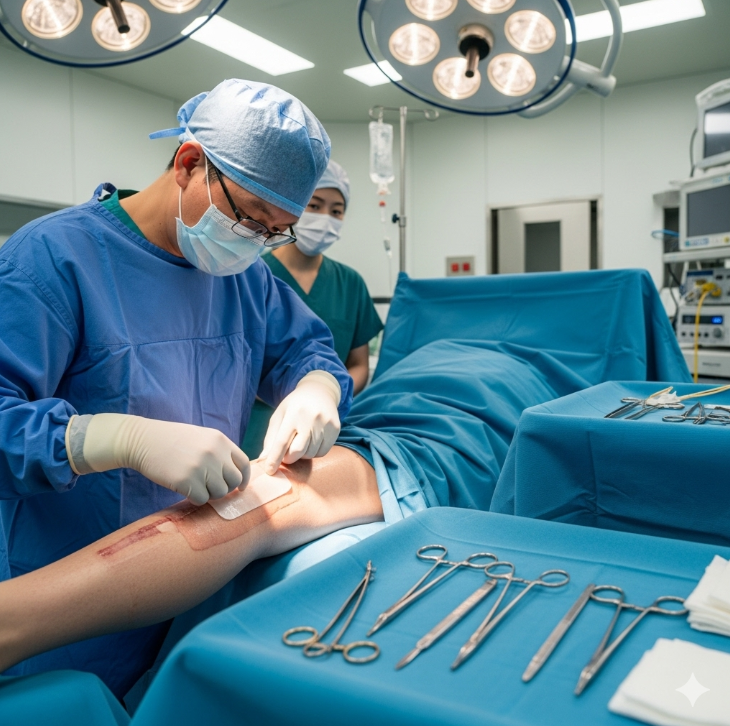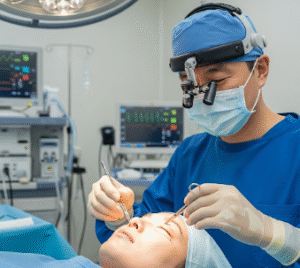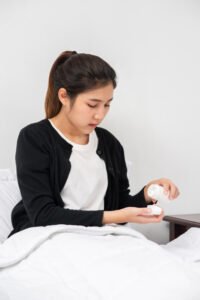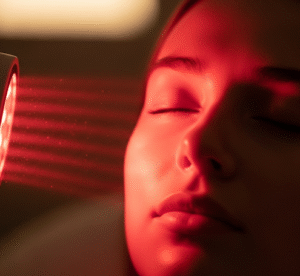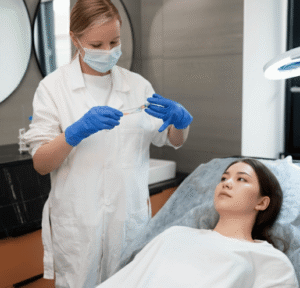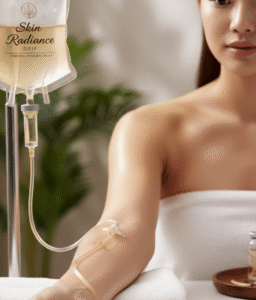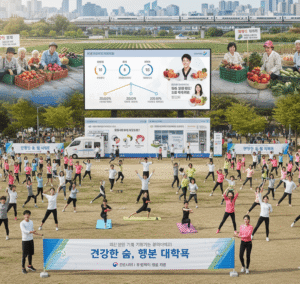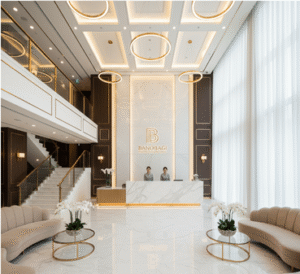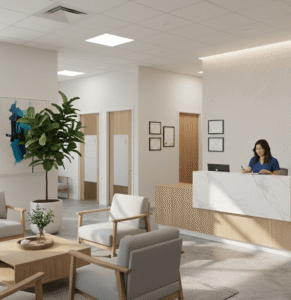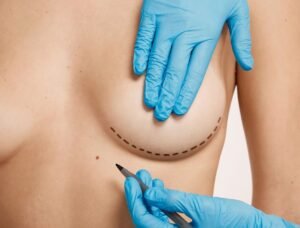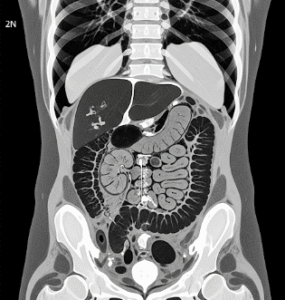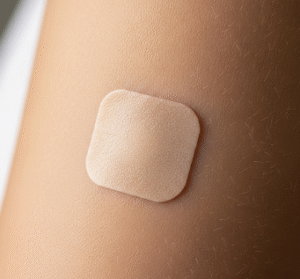What It Is
A split-thickness skin graft (STSG) is a reconstructive surgical procedure where a thin layer of skin is taken from one area of the body (the donor site) and transplanted to cover a wound, burn, or scarred area that cannot heal on its own.
The graft includes the epidermis and part of the dermis, making it thinner and more flexible than a full-thickness graft. This allows the graft to cover larger areas, which is especially useful for burns, trauma wounds, chronic ulcers, and large scar revisions.
In Korea, advanced techniques and equipment such as dermatomes are used to ensure precision, better healing, and natural cosmetic results.
Why It’s Done
Patients undergo split-thickness skin grafting because:
- They have extensive burns or trauma wounds that need coverage.
- Chronic wounds (like diabetic ulcers) do not heal naturally.
- Scar contractures restrict movement and require release with skin coverage.
- Large wounds need skin replacement for functional and cosmetic restoration.
Good candidates include:
- Patients with adequate healthy donor skin.
- Individuals in good general health who can tolerate surgery.
- Those needing coverage of areas too large or deep for primary closure.
Alternatives
- Full-thickness skin graft (FTSG): Thicker graft for smaller but more visible areas like the face or hands.
- Local flaps: Using adjacent skin to cover defects when possible.
- Synthetic skin substitutes or dermal matrices: Temporary or permanent alternatives in complex cases.
Preparation
Before undergoing STSG in Korea, patients will:
- Have a consultation including wound assessment and donor site selection.
- Undergo medical evaluation, including blood tests and wound culture if infection is suspected.
- Stop smoking and alcohol 4 weeks before surgery.
- Discontinue medications or supplements that increase bleeding.
- Prepare for postoperative wound care and follow-up visits.
How It’s Done
- Anesthesia: General or regional anesthesia depending on wound size and location.
- Donor site: Skin is usually taken from the thigh, buttocks, or back using a dermatome (a special surgical tool).
- Graft preparation: The harvested skin is sometimes “meshed” (stretched with small slits) to cover larger areas and allow fluid drainage.
- Recipient site: The wound is cleaned, prepared, and the graft is secured with sutures, staples, or dressings.
- Duration: 1–3 hours depending on wound size.
Recovery
- First week: The graft is closely monitored to ensure adherence and blood supply. The donor site may feel sore, similar to a burn.
- Dressings: Specialized dressings are applied to both donor and graft sites.
- Mobility: Limited movement in the graft area for the first few days to encourage proper healing.
- Return to activities: Light activity usually resumes after 1–2 weeks, though healing continues for several months.
- Final results: Graft takes fully in 2–3 weeks, with cosmetic refinement over time.
Possible Complications
- Graft failure due to poor blood supply, infection, or movement.
- Donor site discomfort, delayed healing, or pigmentation changes.
- Scarring at both donor and graft sites.
- Rare risks: chronic pain, contracture, or irregular pigmentation.
Treatment Options in Korea
Diagnosis
Korean surgeons assess wound size, depth, and location with physical exam and imaging if needed. Digital wound analysis systems may be used in advanced hospitals.
Medical Treatments
For smaller wounds, conservative wound care or skin substitutes may be attempted before grafting.
Surgical or Advanced Therapies
- Split-thickness skin graft for covering large wounds.
- Meshed grafting to maximize skin coverage.
- Combination with vacuum-assisted wound therapy (VAC) to improve graft survival.
- Use of dermal substitutes with grafting for better cosmetic outcomes.
Rehabilitation and Support
- Regular follow-ups to ensure graft adherence.
- Scar care with silicone therapy or laser treatments if needed.
- Physical therapy if graft is near joints to restore mobility.
- International patients benefit from Korea’s advanced wound care centers and multilingual support.

